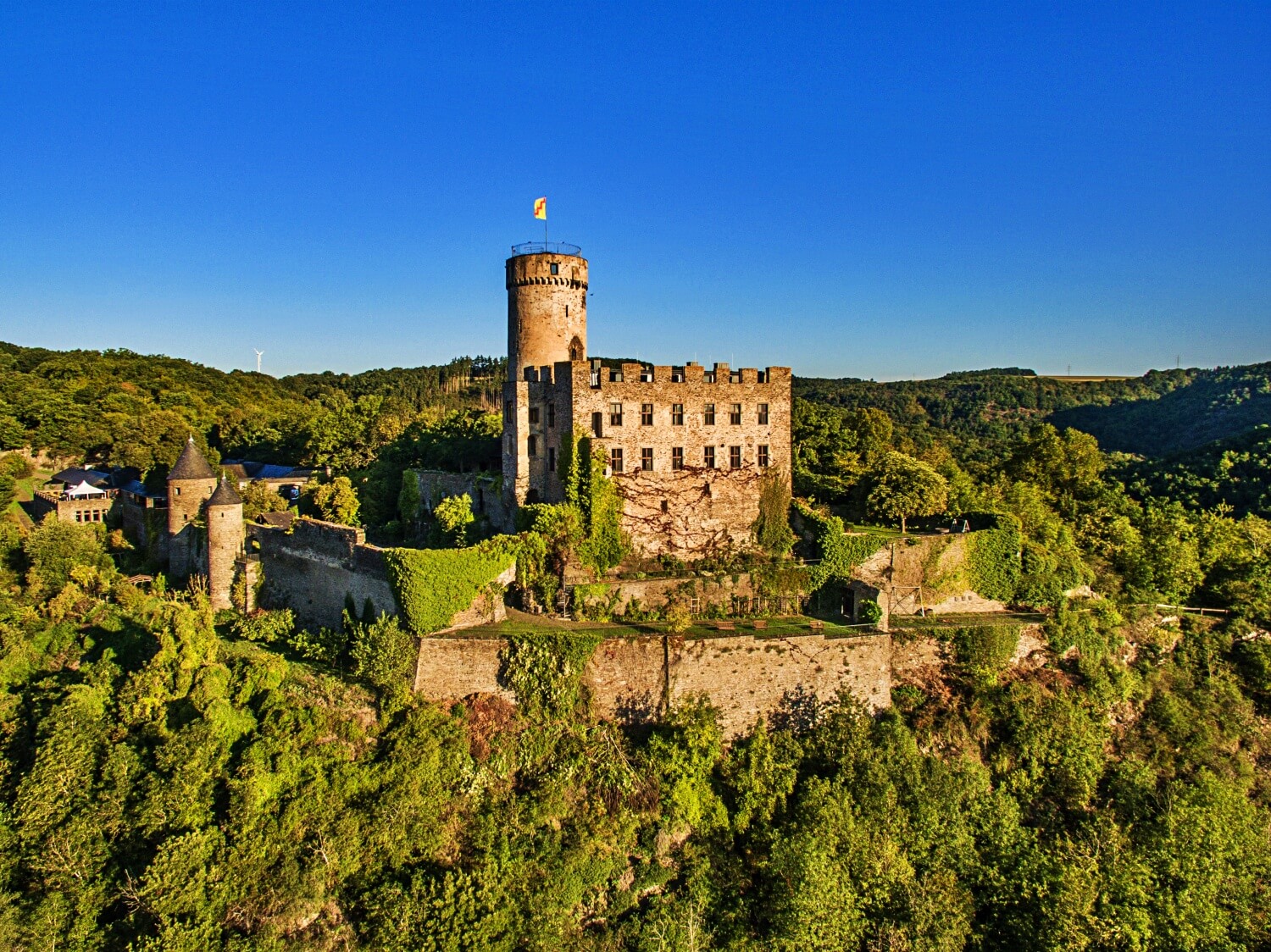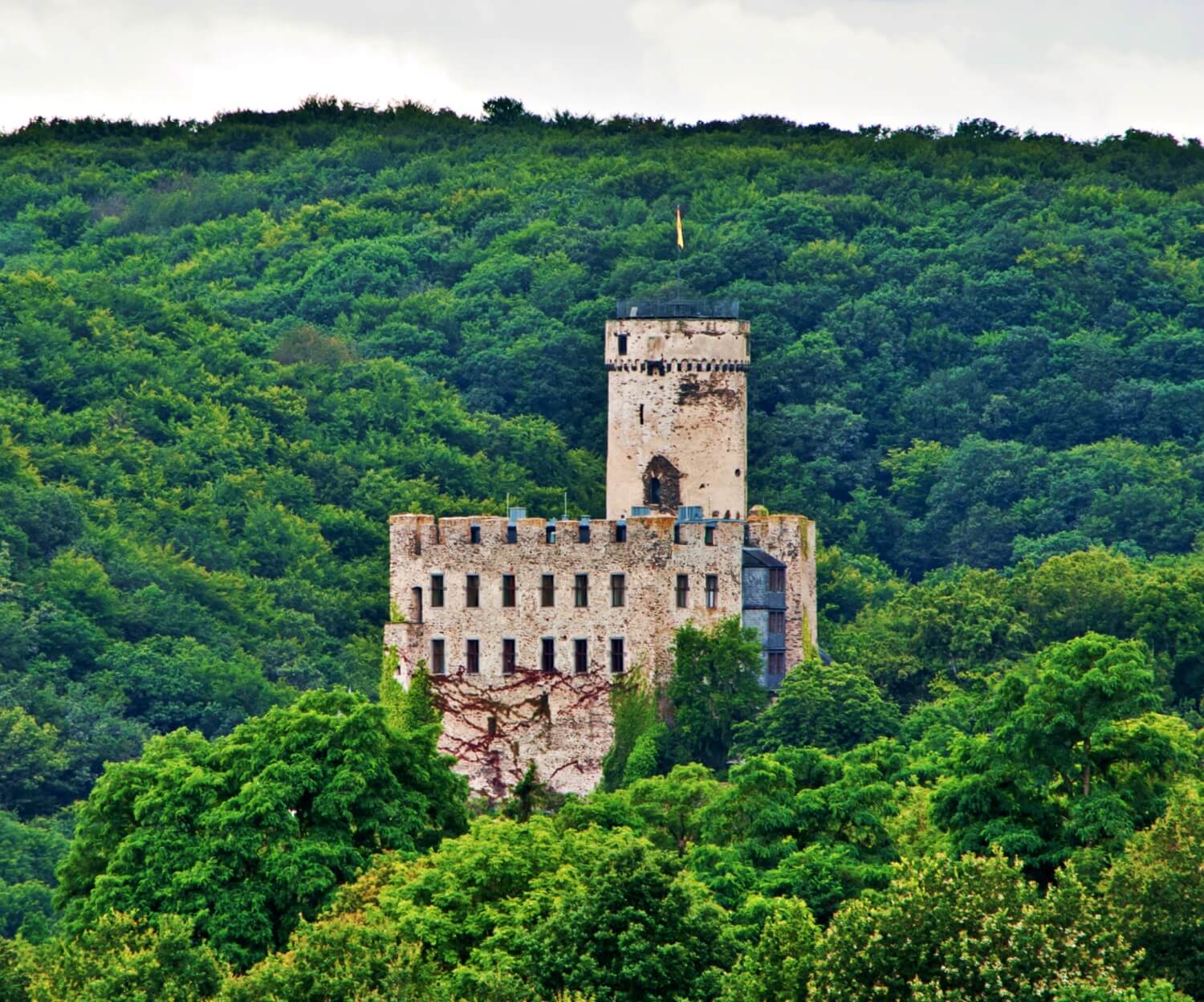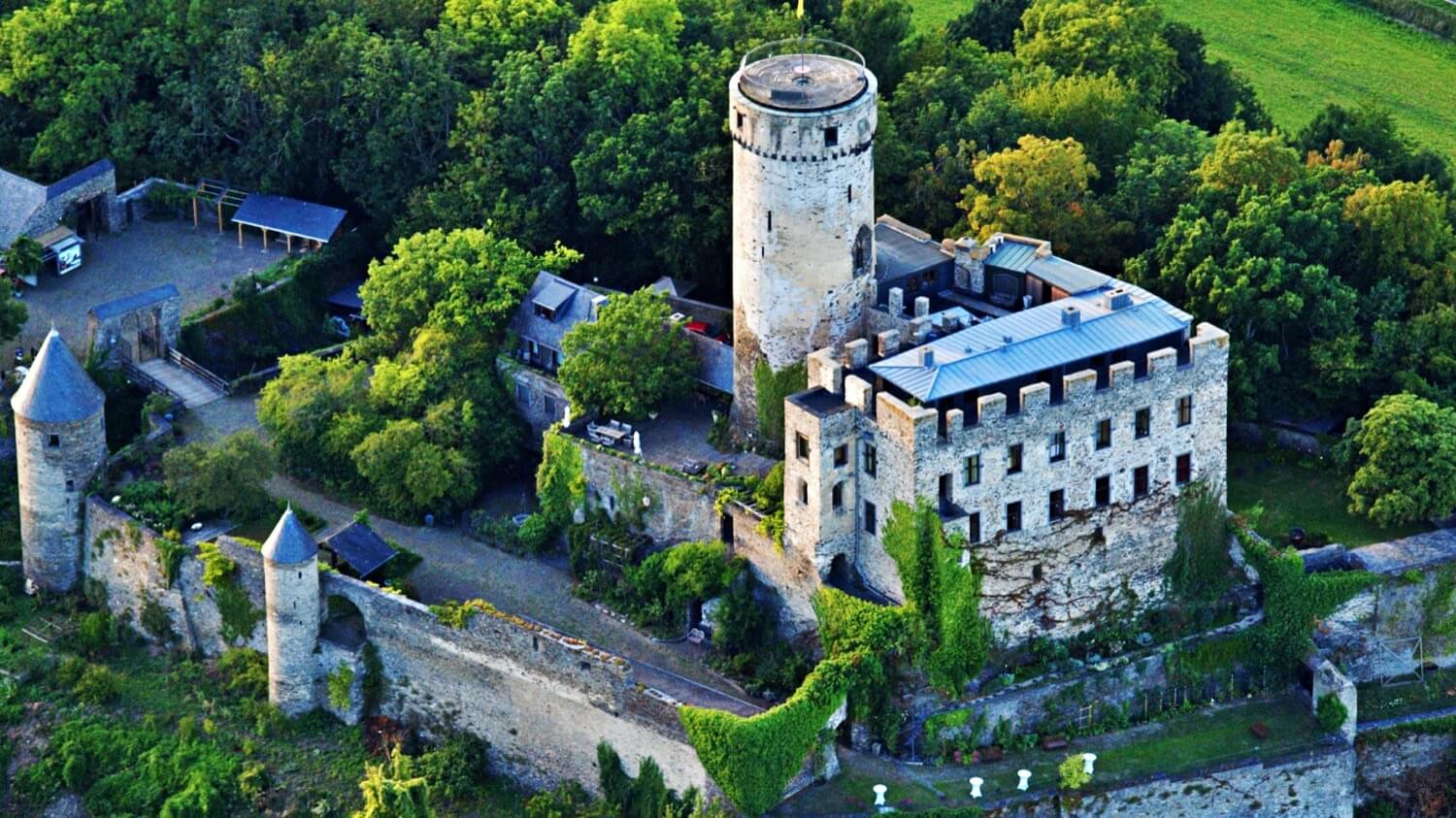Pyrmont Castle
Cochem-Zell Rheinland-Pfalz Germany
castle, chateau
Burg Pyrmont
Cochem-Zell Rheinland-Pfalz Germany
castle, chateau
Pyrmont Castle (German: Burg Pyrmont) stands west of Münstermaifeld near Roes and Pillig on a slate rock outcrop above a waterfall on the Elzbach in the southern Eifel mountains in Germany
Die Burg Pyrmont steht westlich von Münstermaifeld nahe Roes und Pillig auf einem Schieferfelsen über dem Wasserfall des Elzbachs in der südlichen Eifel
Previous names
Pyrmont Castle , Burg Pyrmont
Description
Pyrmont Castle (German: Burg Pyrmont) stands west of Münstermaifeld near Roes and Pillig on a slate rock outcrop above a waterfall on the Elzbach in the southern Eifel mountains in Germany. It is on the parish of Roes in the county of Cochem-Zell.
History
The rock castle was built at the end of the 12th century on count palatine territory by Cuno of Schönburg, whose son Cuno II called himself "Lord of Pyrmont", the first member of his family to use the title. The castle is first recorded in 1225.
In 1441, Cuno VI of Pyrmont laid down by his will and testament how his inheritance (and thus also Pyrmont Castle) should be divided between his three quarrelsome sons, Henry VI, John and Frederick, in order to protect the ancestral seat of the dynasty from division by inheritance. But this did not prevent the squabblers from fighting over the castle after their father's death. Henry VI of Pyrmont had the Reichsacht imposed on him as a result of the inheritance dispute and the administration of his share of the castle was transferred to his brother Frederick.
The castle did not witness more peaceful times until the second half of the 15th century, when Emperor Maximilian I elevated Henry IV, Lord of Pyrmont, to the status of a Freiherr. Although his marriages were blessed with two sons, his daughter, Elisabeth, was eventually to inherit the Pyrmont estate. Since she married Philip of Eltz, the castle fell to this important comital dynasty.
But even the Eltz family did not always agree on the distribution of their inheritance. In 1652, one of the Eltz heiresses sold her share to members of the family of Waldbott of Bassenheim because of the ongoing disputes who, two years later, were appointed imperial Freiherren thanks to their ownership of this estate.
In 1695, another Eltz share in Pyrmont Castle went to the Electorate of Trier and was also acquired by the Waldbott of Bassenheim family in 1710.
In 1712, the Waldbotts began to convert the medieval castle into a prestigious schloss. For example, the palas was increased in height to three storeys and fitted with large windows. The present perron, on the south side of the castle, dates to this period.
In 1789, during the French Revolution, the owners fled from French troops to their estates on the right bank of the Rhine, and just five years later the castle was seized as French national property. She suffered the fate of many castle estates west of the Rhine: in 1810, she was auctioned off by the French, with seven hectares of land, for 4,550 francs. Its new owner, Franz Georg Severus Weckbecker from Münstermaifeld, sold everything of any value. The remains of the buildings then gradually deteriorated.
In 1818, Count Friedrich Waldbott von Bassenheim bought back the castle. Under his son, Count Hugo Waldbott, it was forcibly auctioned in 1862. Many owners were to follow him, but none rebuilt the ruins. Only the family of the architect, Franz Krause, who worked as a draughtsman for The Art Monuments of the Rhine Province, made part of the dilapidated castle complex habitable again from 1912 onwards. However, there was a lack of money for further major restoration.
In 1963, two Düsseldorf architects, Helmut Hentrich and Hubert Petschnigg, bought the remnants of Pyrmont Castle. After its purchase, they began with safety work and a gradual reconstruction, especially of the inner bailey. In 1990, the castle grounds were opened to visitors. In the interior rooms, old furniture and furnishings can nowadays be seen, which fill the rooms with history and partly recall the former owners of the castle. In the rebuilt outer bailey is a souvenir shop.
Die Burg Pyrmont steht westlich von Münstermaifeld nahe Roes und Pillig auf einem Schieferfelsen über dem Wasserfall des Elzbachs in der südlichen Eifel. Sie gehört zur Markung der Ortsgemeinde Roes (Landkreis Cochem-Zell).
Geschichte
Errichtet wurde die Felsenburg Ende des 12. Jahrhunderts auf pfalzgräflichem Territorium durch Kuno von Schönberg, dessen Sohn Kuno II. sich als erster seiner Familie „Herr zu Pyrmont“ nannte. 1225 wurde die Burg erstmals erwähnt.
Kuno VI. von Pyrmont verfügte 1441 per Testament, wie sein Erbe (und damit auch Burg Pyrmont) unter seinen drei zänkischen Söhnen Heinrich VI., Johann und Friedrich aufzuteilen sei, um den Stammsitz des Geschlechts vor Erbteilung zu bewahren. Doch das hinderte die Streithähne nicht daran, nach dem Tod ihres Vaters um die Burganlage zu zanken. Über Heinrich VI. von Pyrmont wurde wegen der Erbstreitigkeiten sogar die Reichsacht verhängt und die Verwaltung seines Burganteils an seinen Bruder Friedrich übertragen.
Friedfertigere Zeiten sah die Anlage erst wieder in der zweiten Hälfte des 15. Jahrhunderts, als der von Kaiser Maximilian I. in den Stand eines Freiherren erhobenen Heinrich VI. Herr von Pyrmont war. Obwohl seine Ehen mit zwei Söhnen gesegnet waren, sollte doch schließlich seine Tochter Elisabeth den Pyrmonter Besitz erben. Da sie mit Philipp von Eltz verheiratet war, fiel die Burg somit an dieses bedeutende Grafengeschlecht.
Doch auch die Eltzer waren sich nicht immer über die Verteilung ihres Erbes einig. 1652 verkaufte eine der Eltzer Erbinnen aufgrund der anhaltenden Streitigkeiten ihren Anteil an Mitglieder der Familie Waldbott von Bassenheim, die zwei Jahre später aufgrund dieses Besitzes zu Reichsfreiherren ernannt wurden.
Ein anderer Eltzer Anteil an Burg Pyrmont gelangte 1695 an Kurtrier und wurde 1710 ebenfalls von der Familie Waldbott von Bassenheim erworben.
Die Waldbotts begannen 1712 damit, die mittelalterliche Burg in ein repräsentatives Schloss umzubauen. So wurde der Palas auf drei Geschosse erhöht und mit großen Fenstern ausgestattet. Die heutige Freitreppe an seiner Südseite stammt ebenfalls aus dieser Zeit.
Während der Zeit der Französischen Revolution flohen die Besitzer 1789 vor den französischen Truppen auf ihre rechtsrheinischen Besitzungen, und nur fünf Jahre später wurde die Burg zu französischem Nationaleigentum erklärt. Es folgte das Schicksal, das viele linksrheinisch gelegene Burganlagen mit ihr teilten: 1810 wurde sie mit sieben Hektar Land für 4550 Franken auf Abbruch versteigert. Der neue Eigentümer Franz Georg Severus Weckbecker aus Münstermaifeld verkaufte alles Verwertbare. Die Reste der Gebäude verfielen zusehends.
1818 kaufte Graf Friedrich Karl Waldbott von Bassenheim die Burg zurück. Unter seinem Sohn Graf Hugo Waldbott wurde sie 1862 zwangsversteigert. Ihm sollten noch viele Besitzer folgen, doch niemand von ihnen baute die Ruine wieder auf. Erst die Familie des Architekten Franz Krause, der unter anderem als Zeichner für Die Kunstdenkmäler der Rheinprovinz tätig war, machte ab 1912 einen Teil der heruntergekommenen Burganlage wieder bewohnbar. Doch es fehlten die finanziellen Mittel für weitere wichtige Sanierungen.
1963 nahmen sich die beiden Düsseldorfer Architekten Helmut Hentrich und Hubert Petschnigg der noch verbliebenen Reste der Burg Pyrmont an. Nach dem Kauf begannen sie mit Sicherungsarbeiten und einem allmählichen Wiederaufbau, insbesondere der Kernburg. Im Jahr 1990 wurde das Burgareal für Besucher geöffnet. In den Innenräumen können heute alte Möbel und Ausstattungsteile besichtigt werden, die die Räume mit Geschichte füllen und zum Teil an die früheren Burgeigentümer erinnern. In der wiedererrichteten Vorburg befindet sich ein Andenkenladen.
Useful information
Gratis
6.00 EUR
4 - 17 Jahre: 4.50 EUR
Familie: 19.00 EUR
ab 20 Personen:5.50 EUR
Wanderwege
info@burg-pyrmont.de
- Besuch nur an Sonn- und Feiertagen möglich
- Individuelle Führung: +50.00 EUR
- Räume zu vermieten
-
External links
Nearby castles

Burg Trutzeltz
Mayen-Koblenz
4.8km
castle, chateau
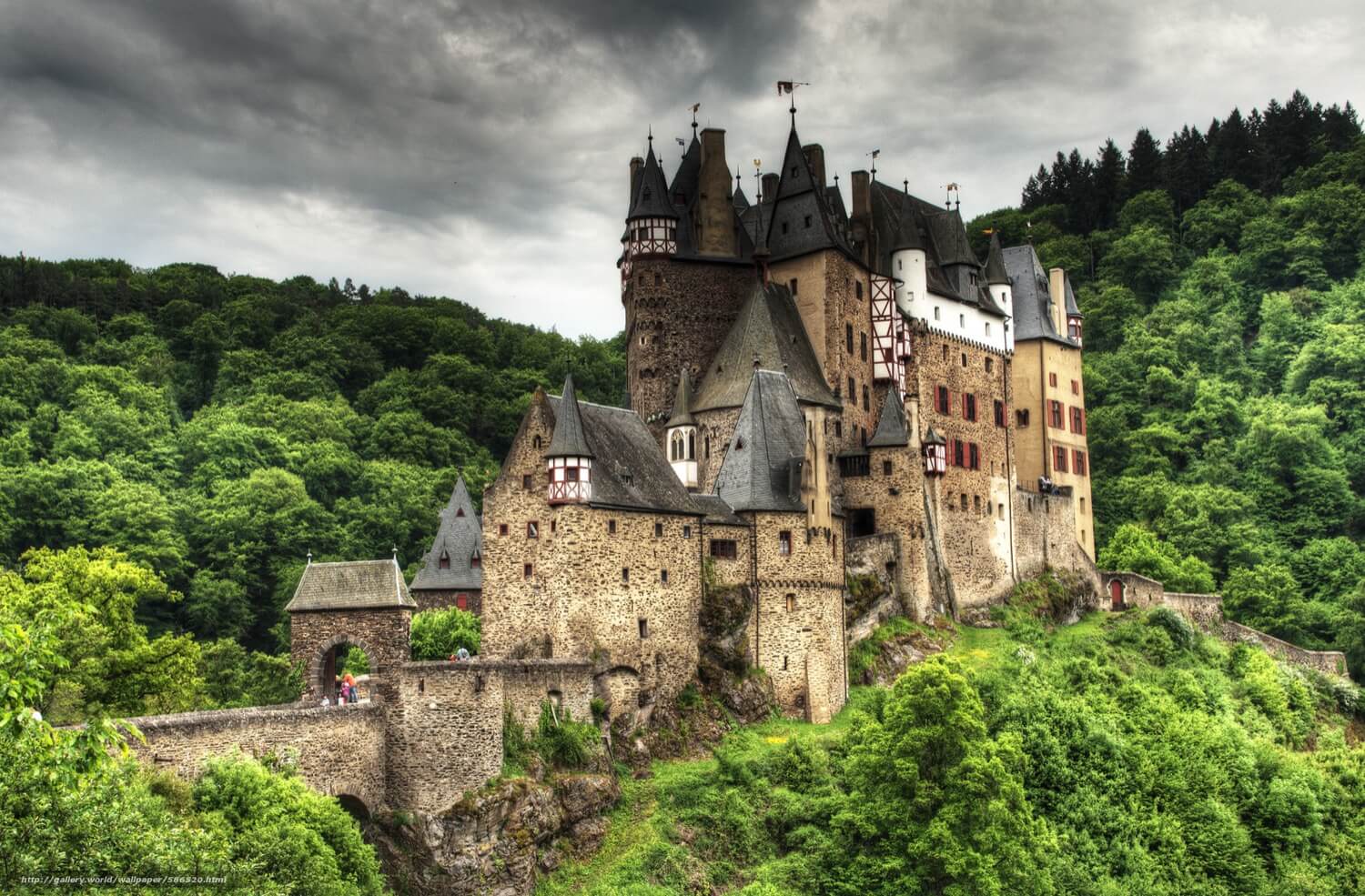
Eltz Castle
Mayen-Koblenz
5.0km
castle, chateau
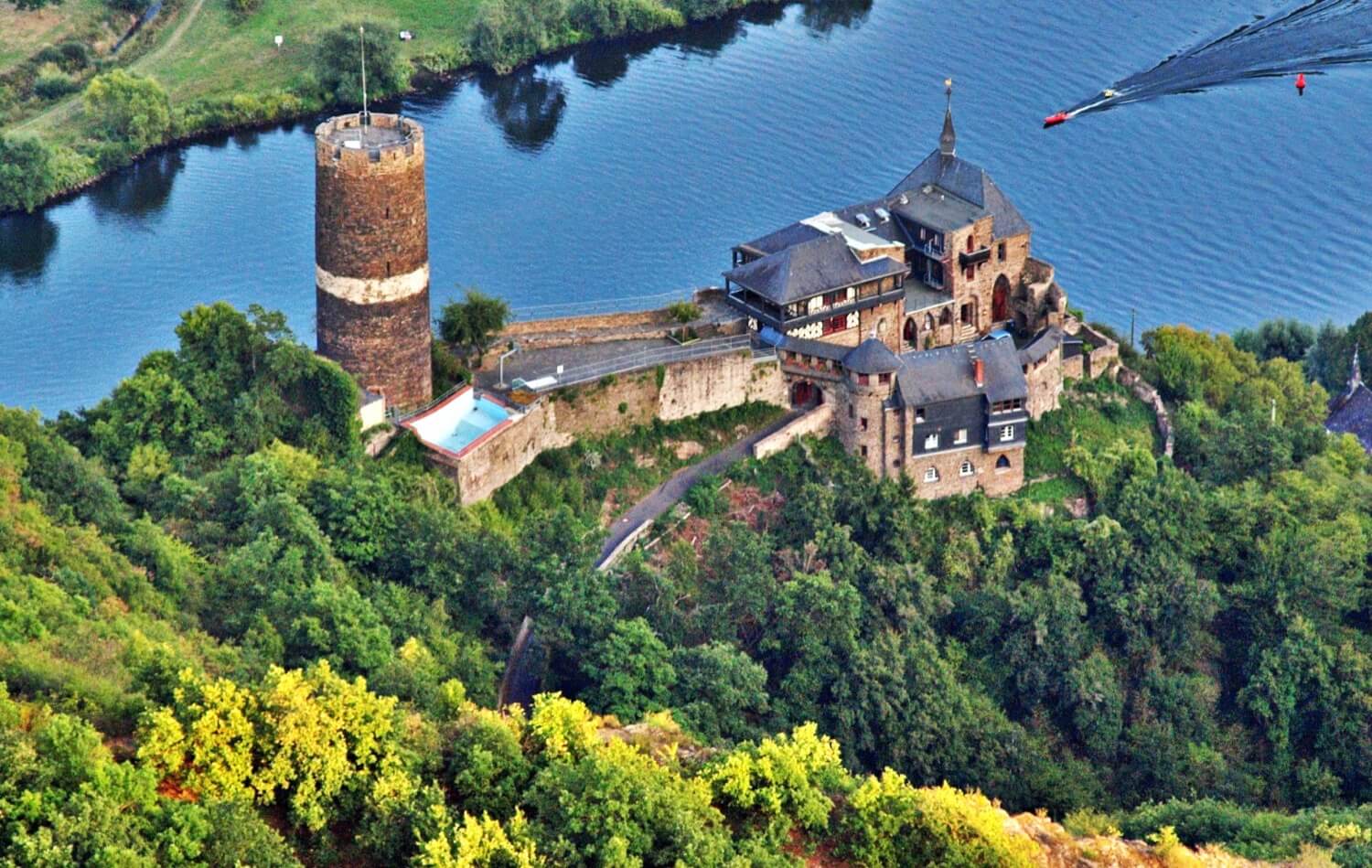
Burg Bischofstein
Mayen-Koblenz
7.3km
castle, chateau
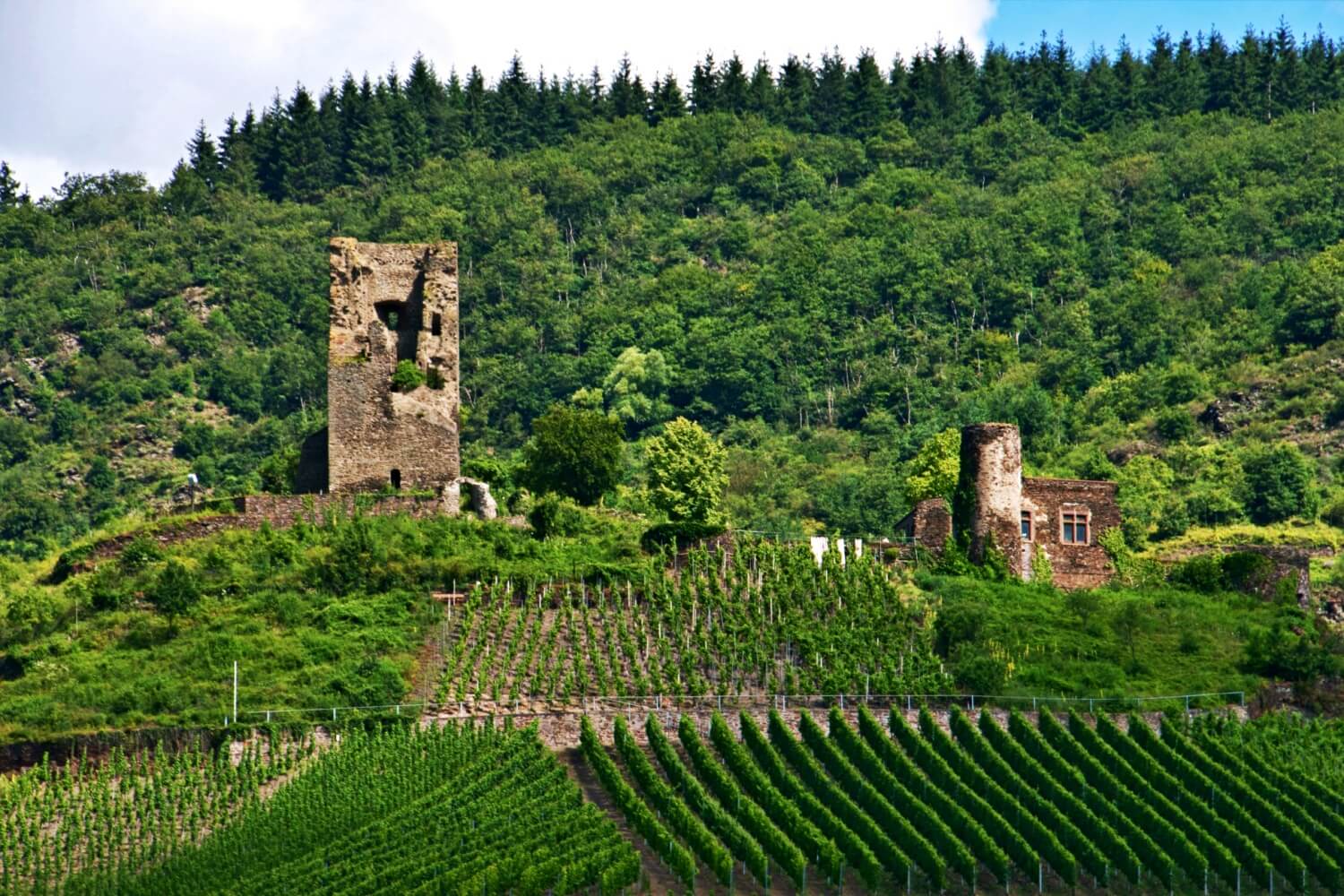
Burg Coraidelstein
Cochem-Zell
10.0km
castle, chateau

Genovevaburg
Mayen-Koblenz
11.0km
castle, chateau
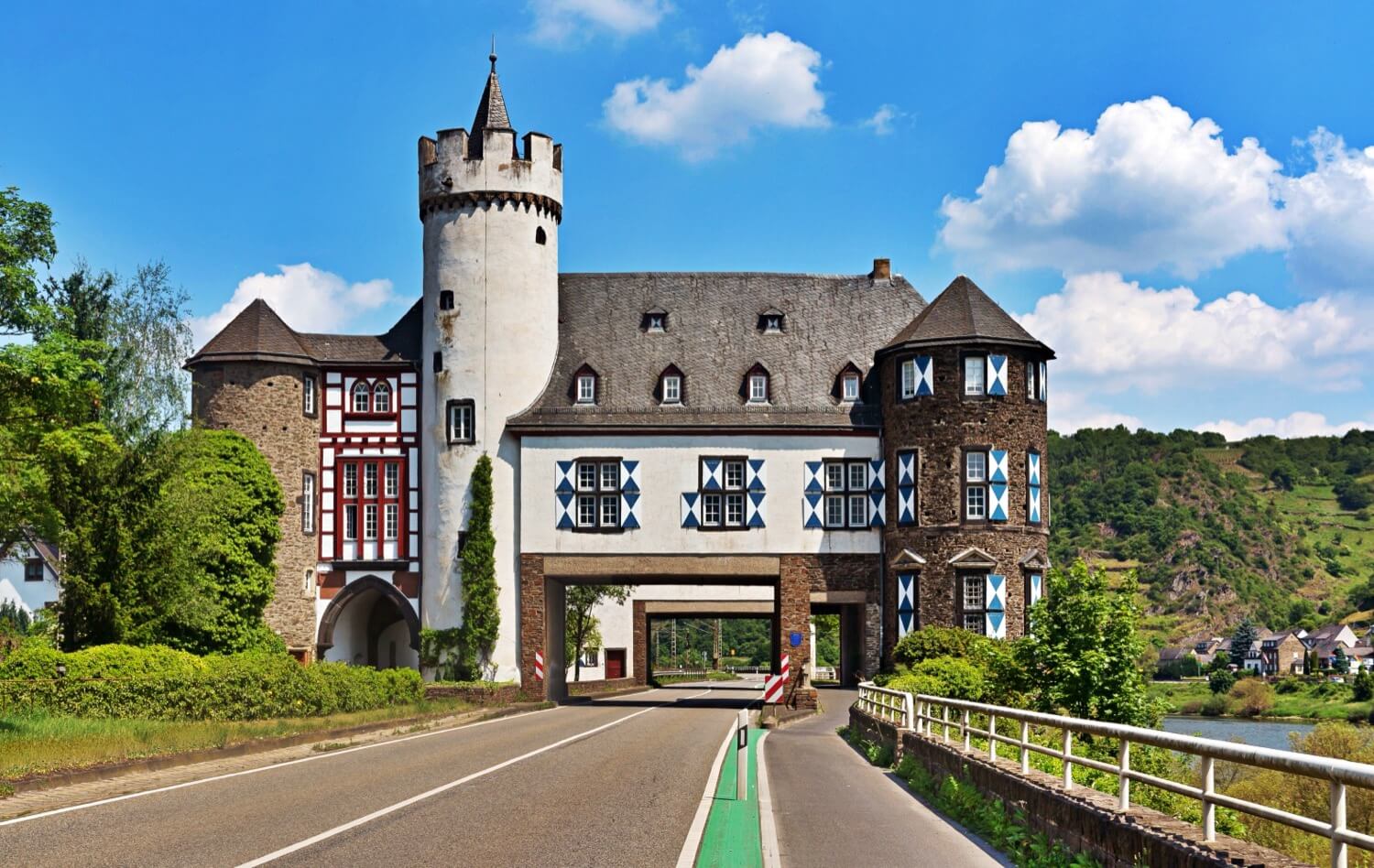
Oberburg (Gondorf)
Mayen-Koblenz
13.6km
castle, chateau
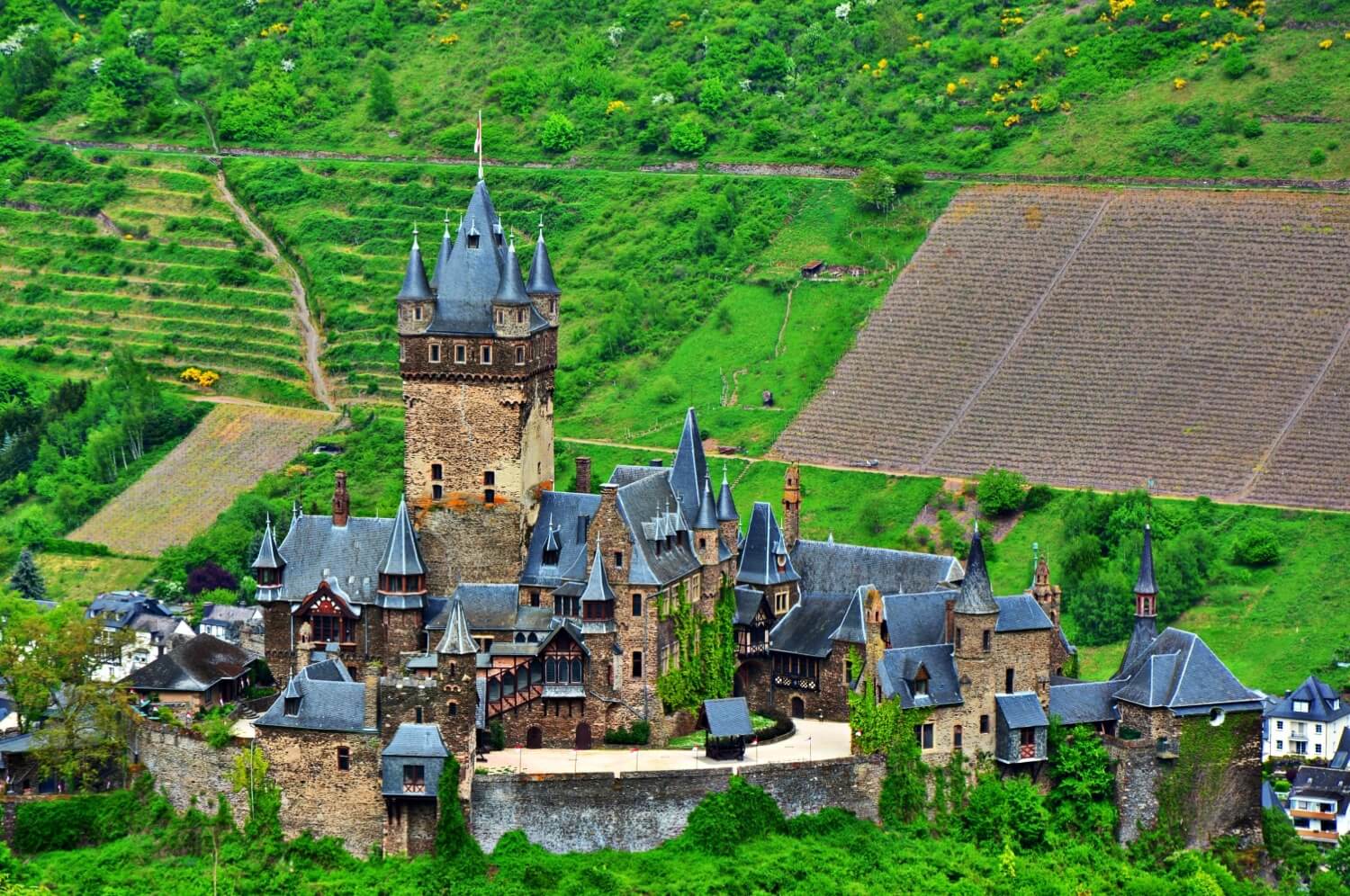
Cochem Castle
Cochem-Zell
13.7km
castle, chateau
